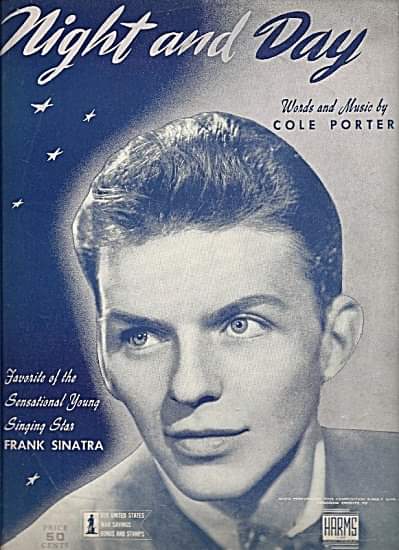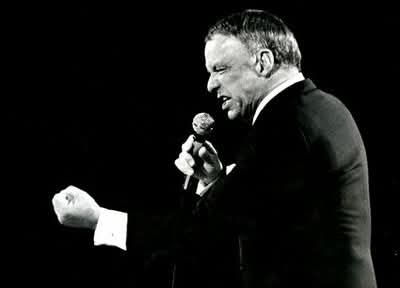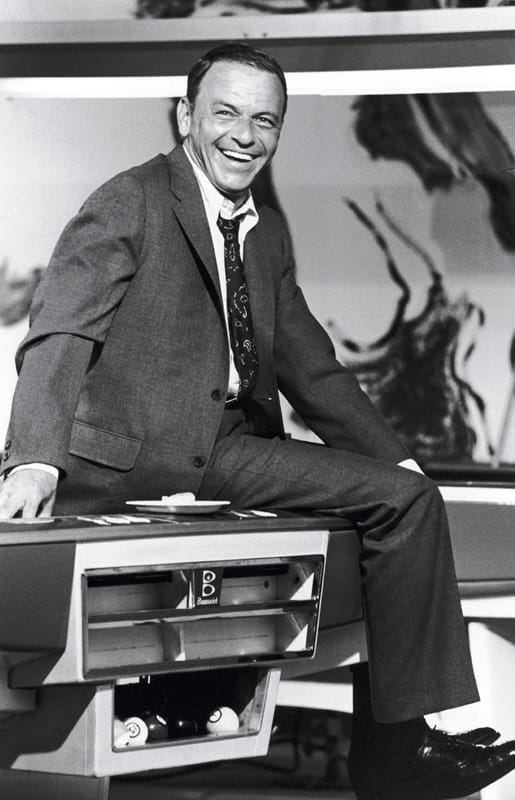
THE LAST YEARS OF FRANK SINATRA
By Mahnuel Munoz
“At seventy-five, Frank Sinatra remains indomitable. Night after night he takes the stage and sings songs of love and longing, hope and despair, and each time he communicates the emotional truths of those songs to a mass of strangers as if they were a handful of close friends. He doesn’t do it just for money; Long ago, Sinatra became rich enough to live in any world that asked to be built for him. Maybe you do it simply because singing those songs enriches you in some way, helps you realize a depth and compassion that doesn’t come so easily in your personal life. Or perhaps singing has become his most faithful company – the best way to evade the darkness and loneliness he has always hated. In any case, it is 1991, and Sinatra is still singing, and will probably continue to do so until it is physically impossible for him to continue. (…) When Sinatra stops singing, it is unlikely that we will see such transcendent, sustained popular art again.”
(“The Wonder Of Sinatra”, Mikal Gilmore, Rolling Stone Magazine, 1991)
At this time, Sinatra’s concerts usually consist of about fifteen songs. The repertoire is stable and includes almost all of the artist’s most recognizable hits. The recital opens with “You Make Me Feel So Young”, “I’ve Got The World On A String” or “Come Fly With Me”, followed by classics such as “For Once In My Life”, “Come Rain Or Come Shine”, “The Lady Is A Tramp”, “Summer Wind”, “The Best Is Yet To Come”, “Mack The Knife” or “My Way”. Of course, there is no shortage of saloon songs like “One For My Baby”, “Angel Eyes” or “Guess I’ll Hang My Tears Out To Dry” and the great finale with “New York, New York”. The public always adores the pay with warm and excited ovations. Frank, visibly moved, raises his glass of whiskey and toasts his followers: “I hope they live a hundred years and that the last voice they hear is mine.”
On August 27, 1991, Frank Sinatra’s first studio recording took place since 1988. His daughter Nancy worked with producer Michael Lloyd – responsible, among many other works, for the soundtrack of “Dirty Dancing” – on a Christmas album with charitable purposes. Frank wants to participate in the album with a version of “Silent Night”, a song that he had already recorded in 1945 and 1957. The 1991 reading, however, is much more special and emotional than its predecessors due to the circumstances surrounding the recording. and the way in which they influence the final result.
The session is scheduled for one in the afternoon, an atrocious time for the singer, who has always preferred to record at night, considering that these are the times when his voice sounds best. He will be accompanied only by Frank Junior on piano, and later orchestral arrangements and choirs will be added.
“It was an emotional day, because he was doing it for the children,” Nancy recalls. “He wasn’t feeling well that day, and it was difficult for him to record. I hear the fragility of his voice, and it is so sweet and tender that it makes your heart shrink.“
Listening to this recording is a complex experience in which sadness at the contemplation of the ruins of his voice is mixed with gratitude for the effort made by the singer and amazement at the beauty of the interpretation, honest and deeply moving.
THE LAST YEARS OF FRANK SINATRA
On September 10, a new session is called to record the song “The Setting Sun” composed by Maurice Jarre and Sammy Cahn, intended for a Japanese film of the same title directed by Rou Tomono and released in 1992. Frank does not like the song and will eventually be recorded by Ella Fitzgerald. Frank would not return to the recording studio until the “Duets” sessions in 1993.
On September 16, a European tour of almost a month begins in Barcelona. Visit Antwerp, Milan, Montecatani, Rome, Pompeii, Oslo, Malmö, Paris, Frankfurt, Hague and Dublin. In Milan, mismanagement of security protocol causes moments of tension when a crowd of media and hundreds of fans surround the car in which Sinatra is traveling. “We have to get out of here,” Frank orders. When Frank and some of his team are able to get out of the vehicle, a photographer with an aggressive attitude pounces on them. Without a moment’s hesitation, Sinatra punches the unfortunate paparazzo hard in the face. During this tour Frank develops a respiratory condition that fortunately occurs between performances. Upon arriving in Dublin he continues to have problems and requests the services of a doctor who appears in his hotel room.
“I’m fine, you don’t have to examine me,” Sinatra snaps. The doctor insists in a very professional manner, but Sinatra loses his nerve and pulls out a revolver. “If you don’t get out of here I’ll blow your head off!” he shouts at the top of his voice. The terrified doctor leaves so quickly that he doesn’t even wait for the elevator and escapes through the emergency exit. Obviously Frank never had the intention of shooting the doctor and those present laugh at the incident, although the singer’s entourage wonders if it is appropriate that at his age and in his state of health he should continue to have access to weapons.
After a month of rest, the tour of the United States and Canada resumes, with a stretch of fifteen days and eight concerts, one of which will be the last of the Diamond Jubilee Tour that he shares with Stevie Lawrence and Eydie Gorme.
On November 13, he gave an interview to journalist Howard Reich for the Chicago Tribune, in which he spoke about the relevance of the city in his career: “Chicago is without a doubt one of the greatest musical cities in the world – in fact, Chicago was one one of the crucial moments in my career. I was with the Harry James Orchestra, we were playing in the Panther Room at the Sherman Hotel, and Jimmy Hilliard, who was on the CBS record label, came to hear a few shows and one thing led to another. Hilliard told Tommy Dorsey about me. Tommy came to see me another time in Chicago, and we were talking. I still had time left on my contract with Harry, but he was great. Dorsey’s orchestra was every singer’s dream at the time. , and it was a tremendous opportunity. I stayed in Chicago with the Dorsey orchestra, and seeing Harry and the guys leave was one of the hardest things I’ve ever gone through.”
At that time, “A Man And His Art” hits bookstores, a book published by Tina Sinatra through the Sheffield family business, which compiles reproductions of some of the paintings painted by Sinatra in the 1970s and 1980s. For Frank , painting was an intense lifelong passion, which served to relieve the tensions of his daily schedule and expand his expressive horizons. He had set up a fully equipped studio in his Palm Springs home. He usually used oil and acrylics, and his style was mostly abstract. Until the publication of this book, Sinatra’s paintings were only known to his family, his close friends, and some of the hospitals and charities to which they were donated. Sinatra’s pictorial work is characterized by bright colors and reveals part of his complex inner life.
As he had done in 1990, Sinatra said goodbye to the year with a series of concerts at the Riviera Hotel in Las Vegas.
If you want to visit more articles about the life of Frank Sinatra enter the following Sinatra Radio 24h link: https://sinatraradio24h.com/category/articles/
We remind you that you can also listen to Sinatra Radio 24 hours on your mobile phone by downloading our free applications for Android in the Play Store https://play.google.com/store/apps/details?id=sinatra.radio24h








